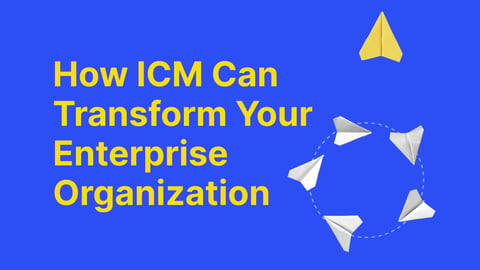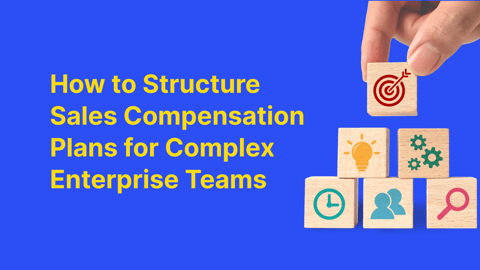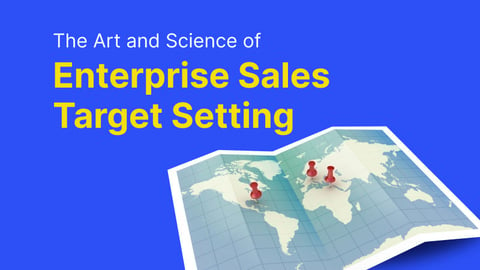Building any business demands innovation, insight, creativity, and passion. You can develop a business by developing new products, managing costs through streamlining and automating your key business processes, or exploiting new channels to your key markets.
However you decide to develop your business, data will be central to how you make your business decisions, often involving large datasets related to the performance of your business or the trends and dynamics of your target market. Companies already recognize this and invest heavily in collecting, storing, and managing the one asset they have in plenty of- their data. Collecting all this data is one thing. Making sense of it and accessing its full value is quite another.
Let's explore data transformation, its challenges, and how technology can help you master it without hiring an army of data scientists.
What is Data Transformation?
Data isn’t some static 'blob' on a server somewhere, consuming budget, computing resources, and electricity. It typically forms a data pipeline that captures data from one source - let's say from your eCommerce site. Here, data involving all the elements of a customer placing an order moves through various systems and processes. A typical data pipeline in this situation will cover securing payment, order processing, delivery, invoicing, and finally reconciling everything so that the CFO can balance the books at the end of the year.
This is a formal data transformation process - where a business process is defined, using dedicated applications to ensure the data move seamlessly and efficiently. By and large, once set up, these processes can look after themselves.
There’s also a situation where managers engage in ad-hoc data business analysis ad transformation projects, perhaps to do some market analytics or sales performance management analytics to see how they can take their business to the next level.
Understanding the Purpose of Data Transformation
The data transformation process - from taking raw data and sending it to the final output - often focuses on the need for decision support, especially in ad-hoc data analytics projects. For example, senior managers might try to decide whether to launch a new product or service or target a new market. Maybe they’re trying to develop new channels to market or a new pricing model.
In these situations, historical data models may be inadequate. Instead, managers may use predictive modeling to help inform them of any potential gaps in the market they can exploit.
Transforming data is critical. Users - unlikely to be specialist analytics engineers - need access to data transformation tools that help them capture, consolidate, and re-slice data sets. Hence, they get a picture that suits their unique requirements during a project. It’s unlikely that a company will have a team of dedicated data engineers on call, so the ability of non-data professionals to manage and execute enterprise-strength data transformations process as part of a more comprehensive data analytics project and as part of their day job is increasingly paramount.
Let's look at how you might deliver this capability to your business.
An Overview of Data Transformation Techniques
The data transformation process lies at the heart of extracting intrinsic value from a company’s data. Whether moving the data from multiple sources to a single data warehouse, carrying out data cleansing, or engaging in detailed data analytics, the enterprise data transformation process is a crucial business process that companies - of all sizes - need to master if they’re going to be successful.
This issue matters because many organizations now take a different approach to managing and using their data before it was the preserve of the IT function or, more recently, a dedicated data analytics function. However, the need to make use of data more swiftly is encouraging business users themselves to do their own data analytics and data transformation, for example, the sales and marketing function trying to understand the markets and customers they serve, so they can help improve sales performance, to get better business results.
Transforming data isn't a single defined process, randomly applied in the hope of giving the insight you want. The data transformation process can cover a range of steps that will give you the picture you need to make that critical decision.
Data transformation may cover a range of activities:
- Data discovery to find what data is located on which system
- Capturing raw data from a source system or multiple systems
- Data cleansing, where you separate data sets you need from those you don't
- Removing duplicate data
- Identifying missing values
- Converting data types into your desired format
- Creating structured data from unstructured data
- Consolidating data into a data warehouse
This list is far from exhaustive but does hint at the potential complexity of data transformation projects that line of business employees may need to embrace.
Common Data Transformation Techniques
Let's explore a few data transformation techniques to get a sense of what’s possible:
Data Smoothing
Data smoothing is a technique to better understand trends and dynamics in a data set. It’s a way of removing statistical outliers to make the trends easier to discern, amplify the ‘signal,’ and reduce the ‘noise.’
Care needs to be taken, as the outliers might confuse a picture and be statistically significant. Equally, you need to think about which outliers you remove and even how to define what an outlier is. Data analytics does require users to apply common sense judgment to get valuable insights rather than just numbers produced in a report.
Data Aggregation
Data aggregation is a common - even essential technique - for combining multiple data sources to summarize the information available. This might cover the total revenues per quarter over a year, the average deal size, the average sales cycle, or highlighting trends such as revenue growth or margin growth.
Data Mapping
Data mapping involves defining the methods by which different data sets are integrated. Even with data sets covering the same or similar areas, they might represent a range of similar fields differently. Just think about the number of different ways that address information can be presented to get the idea. Data mapping allows users to consolidate data to ensure that regardless of the data formats of various data sets, consistent and accurate consolidated data can still be constructed.
Again, you need to be careful. While data mapping is a great way to create a consistent data set, you need to make sure you’re mixing 'apples and apples' and not ‘apples and oranges’ when it comes to merging data sets.
The Role of Data Transformation Software
It’s already clear, even just scratching the surface, that transforming and analyzing data is hugely valuable but also complex and open to error if insufficient attention is paid to detail.
The role of data transformation software is to put a space between the user and the data so that the user can understand how best to use the data while the software focuses on the operational detail.
Data transformation software helps you view the end-to-end transformation process from the source data sets, the multiple transformation processes, the destination data set, and the destination platform. This helps from a project management perspective but also helps with auditing changes made to data sets.
Key Features of Data Transformation Software
The core value of a data transformation application is its ability to streamline and automate the data transformation process end-to-end. Gone are the days when companies could allocate scores of IT staff, project managers, and data analysts. To get twice the results, the job must be done in half the time, with a third of the resource.
Depending on your unique needs, the features you need require include:
A Cloud-based Architecture
As we touched on, the biggest hurdle to any technology-based project used to be the constraints that a company's IT function had to work to. That's much less the case now with cloud-based computing capabilities. Now, with (theoretically) just an email address and a credit card, line of business users can purchase and commission enterprise-strength software applications without involving their IT function.
Systems Integration
We've already discussed the need for various data sets to be integrated into various systems to extract the final required data set. Systems integration was a major headache for IT Directors, but technological advancements mean it’s now more straightforward.
The quickest and easiest way is to have templates – or connectors – that can integrate into critical applications. These might include finance systems, CRM platforms, and eCommerce systems for teams engaged in sales and marketing activities. Ideally, your platform of choice will have out-of-the-box connectors that make integrating your data transformation platform into a range of critical business applications straightforward, streamlined, and automated.
At the other end of the process, it must be easy to set up and manage the destination location and data structure.
Drag and Drop Data Transformation Capabilities
Technology advances mean that it’s possible to eliminate the need for coding skills in the data transformation process. Instead, software providers have developed powerful interfaces allowing users to visualize the data transformation process. Drag and drop functionality will enable users to select data sources, apply data transformation processes they need, and ensure that the manipulated data set moves successfully to the target data source.
These capabilities are both easy to use but also help users see the process end-to-end so that users can be confident that the final result is what they need for their project.
Export, Load, Transform (ELT) Capabilities
A critical capability that any data transformation toolset needs are the ability to perform ELT functions. Historically, data transformation projects have relied on a staging server (or a swing server), where you could store the data temporarily, transform it, and then load it in the final destination database - ETL. The issue with having that extra service in place is that it costs more and takes time to set up – usually with the help of the overworked IT team.
Cloud-based ELT capabilities eliminate the need for this swing server requirement. They provide a virtualized environment that allows a data transformation tool to execute the transformation process quickly and easily without needing extra hardware.
Choosing the Right Data Transformation Software
A business team looking to select a data transformation platform is spoilt for choice - there are many options. But not all tools are the same. The busy business team has no time to explore their options and develop the right skills. They have a day job to do.
One option is to choose a platform designed for the specific business case, for example, the sales and marketing teams. There’s significant value in having integration tools available out of the box that can integrate into a range of platforms widely used by sales and marketing teams to manage sales performance, pipeline management, CRM, eCommerce, website traffic, and much else.




